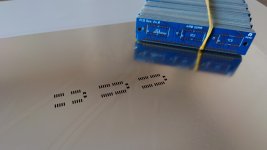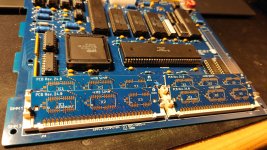Kai Robinson
Well-known member
@Kai Robinson that's right, I've ordered the 4 layer PCB from China and parts. However, I realized this attaches to the PLCC on the logic board, right? If so, I'm not sure I quite understand the entire design. I get that the 84pin PLCC is on top with the BBU attached, but what about the one for the logic board, is there an adapter? Can you send a photo of a completed unit? Or maybe a part number for that. I'll de-solder the PLCC from an SE board and attach the break-out and send it to @asicsolutions. I don't really want to burden him too much on this project as I know he is busy and also is focusing much effort on the Xceed project. While I think this might help a bit with this project, if it looks like it will take too much time, I'll see who I can dig up in China to help.
So the board you have - you desolder the BBU socket - solder either of the socket locations on the PCB into the board, plug the BBU back into a socket located on that PCB, and then the pin headers allow you to snoop the signals.



